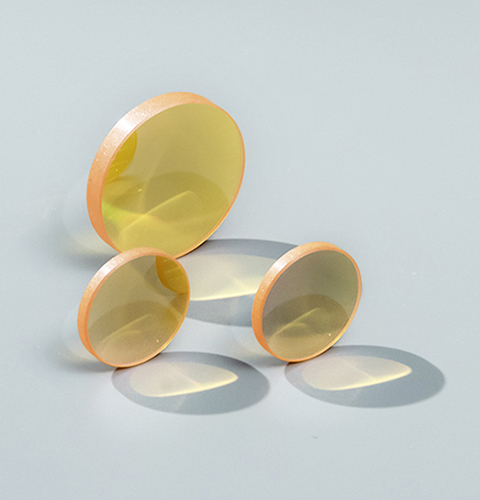Zinc Selenide (ZnSe)Plano-Convex Lenses
Plano-convex lenses deliver less spherical distortion when focusing at infinity (when the imaged object is far away and the conjugate ratio is high). Therefore they are the go-to lens in cameras and telescopes. Maximum efficiency is achieved when the plano surface faces the desired focal plane, in other words, the curved surface faces the collimated incident beam. Plano convex lenses are a good choice for light collimation or for focusing applications utilizing monochromatic illumination, in industries such as industrial, pharmaceutical, robotics, or defense. They are an economical choice for demanding applications because they are easy to fabricate. As a rule of thumb, plano-convex lenses perform well when the object and image are at absolute conjugate ratios > 5:1 or < 1:5, so spherical aberration, coma and distortion are reduced. When the desired absolute magnification is between these two values, Bi-convex lenses are usually more suitable.
ZnSe lenses are commonly used in IR imaging, biomedical, and military applications, they are well suited for use with high-power CO2 lasers due to low absorption coefficient. In addition, they may provide enough transmission in the visible region to allow the use of a red alignment beam. Paralight Optics offers Zinc Selenide (ZnSe) Plano-Convex (PCV) Lenses available with a broadband AR coating optimized for the 2 µm – 13 μm or 4.5 – 7.5 μm or 8 – 12 μm spectral range deposited on both surfaces. This coating greatly reduces the average reflectance of the substrate less than 3.5%, yielding an average transmission in excess of 92% or 97% across the entire AR coating range. Check the following Graphs for your references.
Plano-Convex Lenses
Professional technical engineer dedicated to guide you
According to your actual needs, choose the most reasonable overall design and planning procedures
